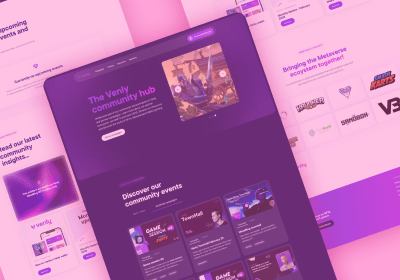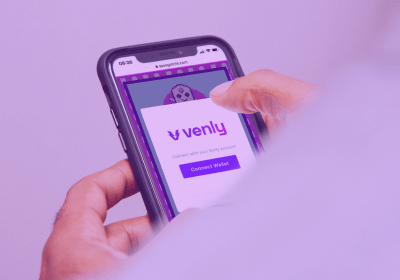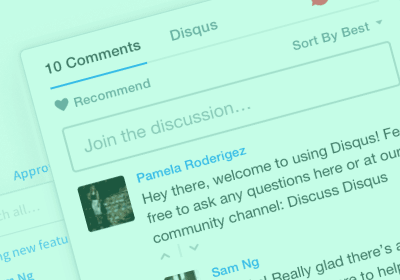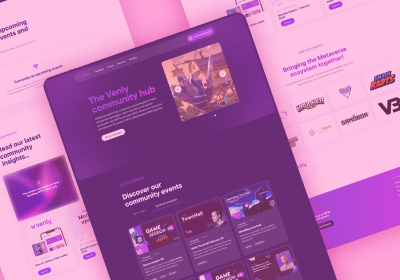NFT Content Gating
What is an NFT gated content website?
Content gating refers to the practice that not all content is visible for every visitor of the website. With NFT content gating, the site owner uses login technology to authenticate a user with a web3 wallet. After authentication, the website or application detects if the wallet holds specifics NFT assets or other tokens. Based upon pre-set criteria, exclusive server-side access is then granted to restricted content. Perks and benefits of the website become available for the user.
How to use SiteManager to create gated content experiences?
SiteManager has built a powerful No-Code environment to quickly set up these kinds of decentralized user experiences. Without writing a single line of code, a user could build a website and protect specific elements, collections, sections and pages. At this stage, we are running our technology in a closed beta. With a close community of creators, we discuss use-cases to build portfolios step-by-step. If you want to be part of this journey, you are welcome to join our discord server.
Advantages of NFT gated content websites
To understand the advantages of decentralised NFT gated content experiences, let's first discuss how current centralised login systems work.
Web2 login authentication works in a centralized way
Website logins aren't the new talk of the town. In fact, most internet users has once registered on a website to create a user profile. The first generation of login systems worked by clicking a button on a landing page and submitting a first name, last name and a password. In this case, you sell your personal data to the owner of the website in exchange for website access. And when you've save your logins in your Chrome browser,... well you know yourself who uses that data.
In trying to improve the onboarding experience, more and more website owners switch to a Single Sign On (SSO) method. This practice reduces frictions and makes it easier for the visitor to create a login. It has proven to lead to more conversions. With SSO, users authenticate themselves with a Google, Facebook, or Apple ID. In this second generation of login technology, the personal data of registrants is not only shared with the website owner, but also with the big tech players.
If you don't own the keys, you don't own the data
In both ways, the personal data of the user is stored and managed in a centralized database. The website visitors don't actually own the data they upload. And in most cases, it's not possible for the individual user to actively control the flow of his/her data. But times have changed. Since Europe has sharpened its Data protection law in 2018, visitors do care more about their data privacy and website owners have more concerns about how to be GDPR-compliant.
It's not only legal issues that challenge centralized user login technology. A second risk is the monetization of the personal data of the users. This is how it works; centralized entities directly own the content and personal details of the user. Every time you identify yourself on a page with your Google or Facebook account, you express certain interests in specific content. This data is sold to advertisers to better target their defined market.
It is generally seen as one of the major problems of the centralized login technology, visitors don't actually own their personal data, and they allow centralized entities to sell it to others.
Web3 wallets act as decentralized passwords
Website logins based on Web3 wallets work in a decentralized way. A wallet could be seen as a user's gateway to Web3. Unlike a physical wallet, a Web3 wallet doesn't hold cryptocurrencies, NFTs or other tokens. These are safely and decentralized stored on the blockchain. The wallet (f.e. MetaMask) replaces passwords. Visitors could log in with their Web3 wallet to access all the content on the website. Web3 Wallets are free to use, easy to set up and - perhaps most importantly - completely anonymous.
NFT tailored experiences
Once a user connects with a web3 wallet, it is used to verify ownership of its assets (cryptocurrencies, tokens, NFTs). NFTs are a way to store information about yourself on the blockchain. They are like digital fingerprints or private keys that can be used to identify you. But remember; a wallet is anonymous, NFTs make it pseudonymous. Still, no one exactly knows who you are. This opens up opportunities for marketeers to create tailored experiences for NFT holders and give access to specific functionality in a decentralized way.
Examples of NFT gated website types
NFT gated content can be used for different use cases. In fact, it could replace any centralized login system. In an economy where buyers are more keen than ever to protect their privacy, it's a great way for companies to become more customer-centric. Below we are listing some of the most popular uses cases: NFT gated communities, NFT Subscriptions and NFT Memberships.
NFT or token gated community
As NFT collections are publicly stored on the blockchain, it's possible to build a private community focussed on NFT holders from a specific collection. Imagine you created a great dashboard that visualizes all the transactions and activities of the CryptoPunk collection. NFT gated content is a solution to build a beautiful website around the project, only enabling CryptoPunk holders to login and actually access the dashboard.
NFT Platform Subscriptions
Think about the SaaS economy, all the companies that are shipping software in the browser. An NFT could be a new way to grant access to software platforms. Some are already talking about the NFT subscription economy. NFT subscriptions also give additional rights to the owner. Because the NFT is actually the access key to the platform, the NFT holder can decide to sell the NFT on the secondary market.
Let's compare it with car-owner ship. You can drive the car as long as you are the owner of it. The moment you sell the car on the secondary market, someone else is entitled to drive with it. In case of consumables, the resale price is often lower than the catalog price.
In case of NFT subscriptions, the resale price could be higher. This could be the case if the value of the software has increased over the years. This creates great opportunities for holders who can realize margins, but even the distributor can earn royalties on the resale prices paid on the secondary market. Win-Win.
NFT Memberships
Another great example of NFT gated content are NFT Membership sites. Recently there have been some great examples in the space of educational platform. Let's take the example of The University of Nicosia. To register for the courses, students need to mint a NFT. This access NFT is free, only the gas fee should be paid to use the Ethereum-blockchain. There is no centralized database to manage the subscriptions. Everything is store and managed on the blockchain.
The free NFT is stored in the Web3 wallet (f.e. Metamask) and gives access to all the course and tutorials. The platform owner can monitor which NFT is used to access a specific course. This way, interest could be segmented, and other related courses could be suggested. If a course is successfully completed, the platform will propose to buy a course certificate. Of course, that certificate is also an NFT.
What's in it for you?
There are numerous examples, how NFT gated content could help organizations to build new ways to engage and interact with their audience. If you have a specific case you would like to discuss with our team, join our discord or drop us a note in the form below.
Wait - there's more
Don’t see the feature you want? There is more under the hood!




